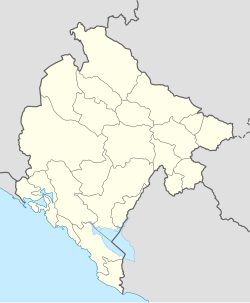Page 1 of 1
DALMACIA - TOKA E DHENVE
Posted: Wed Aug 18, 2010 11:21 am
by ALBPelasgian
Dalmatia dhe banoret e saj te fisme delmatet llogariten te kene qene nje prej fiseve me te dalluara ilire ne veri. Per me teper, ata fituan fame ne kryengritjet e tyre kunder-romake aq sa shpeshhere romaket ndermirrnin aksione te rrepta ndeshkimore kunder tyre. Elementi pasardhes ilir megjithate ka mbijetuar gjer vone, te cilin do ta faktojme me materiale ne po kete teme.
Vazhdim te kendshem!
Re: DALMACIA - TOKA E DHENVE
Posted: Wed Aug 18, 2010 11:23 am
by ALBPelasgian
Population. The population of Dalmatia in 1869 was 458,611, in 1880 : 476,101, thus 37 inhabitants per square km. The lowest population density (20) is found in the district (Bezirkshaupmannschaft) Benkovac, the densest that of Lesina (55). The population is distributed in 81 municipalities and 841 communities with 80,149 inhabited houses. The most numerous population elements in Dalmatia is the Serbian (93 %), who in the interior are called Morlachs. North of the Cettina persons in height, dialect, clothing style and customs are similar to he Croatian type; on the islands the influence of Italian idiom is noticable. The Slavs use, in addition to the Latin alphabet, also (for the purpose of religious service) the Cyrillic and Glogolithic alphabet. The next most numerous population element are the Italians (5.8 %), concentrated in the coastal cities and on the islands. In the larger cities about 3400 Germans reside. About 900 Albanians inhabit Borgo Erizzo near Zara, about 250 Jews of Spanish descent form the rest of the population.
Meyers Konversations-Lexikon 1885-1892, Article : Dalmatien
Area : 233.4 square miles, population 411,000 , Slavs, which are generally called Dalmatians, but also Morlachs in the north, Ragusans and Bocchesi in the south, further Italians, Albanians and a few Jews.
Pierer's Universal-Lexikon 1857-1865, Article : Dalmatien (1)
Re: DALMACIA - TOKA E DHENVE
Posted: Wed Aug 18, 2010 11:25 am
by ALBPelasgian
Ragusa three blue dialogal beams on the right, Zata a harnessed rider, Cattaro (Austrian Albania) a red lion. The flag is that of the Austrian navy. The capital is Zara.
Meyers Konversations-Lexikon 1885-1892, Article : Dalmatien
Kattaro eshte vecse Kotorri:


Re: DALMACIA - TOKA E DHENVE
Posted: Wed Aug 18, 2010 11:28 am
by ALBPelasgian
Venice did little in order to raise general welfare and to promote the education of the inhabitants by the means of public schooling. Still disappointment was general, when the Doge's Republic was dissolved in the Treaty of Campo Formio on May 12th 1797, and hitherto Venetian Dalmatia came under Austrian rule, In the Treaty of Pressburg 1805 Austria had to cede almatia to Napoleon I. who, after the expulsion of the Russians, added it to the Kingdom of Italy. After, in the Treaty of Vienna, he also gained Hungarian Dalmatia, in 1810 out of all of Dalmatia and the Austrian territories west of the ava River he formed
the so-called Illyrian Provinces of his Empire. In 1814 Dalmatia fell back to Austria and was merged wih the agusan territory
and a part of Albania, and elevated to a separate kingdom.
http://www.zum.de/whkmla/region/balkans/dalmenc19.html
Pierer's Universal-Lexikon 1857-1865, Article : Dalmatien (2)
Dalmatia, history. ... In 1089 the kings of Hungary conquered Dalmatia, and it remained at imes under their, at times under Byzantine protection, under indigenous princes, until it was conquered by the Turks under Muhammad II., following the death of the last prince. By that time Venice already had conquered a number of coastal places, but had to give them up in 1358. In 1409 Venice reacquired them by a combination of conquest and purchase, and succeeded in driving the Turks from the coast. The most important gain was made in 1713, when Venice in the Treaty of Passarowitz, in compensation for the loss of Morea, was ceded territory in Dalmatia. So Dalmatia was divided in three, Austrian Dalmatia, Venetian Dalmatia, Turkish Dalmatia (between Bosnia and Albania). Further the Republic of Ragusa forms part of the old Dalmatia; in 1797 Venetian Dalmatia came to Austria, in 1809 to France, which ceded it to the Kingdom of Illyria; in 1814 it came back to Austria, which formed a separate kingdom of it.
source in German
Re: DALMACIA - TOKA E DHENVE
Posted: Wed Aug 18, 2010 11:29 am
by ALBPelasgian
South of the Narenta Valley the border woth Turkey is formed by an uninterrupted mountain chain which continues around Cattaro Bay to Albania's border; its highest point, and at the same time Dalmatia's highest elevation, is Oria at 5,846 feet.
Per informacione shtese drejtohuni te:
http://www.zum.de/whkmla/region/balkans/dalmenc19.html
Re: DALMACIA - TOKA E DHENVE
Posted: Wed Aug 18, 2010 11:32 am
by ALBPelasgian
The name Dalmatae is connected with the Illyrian word delmë, dele in modern Albanian, which means sheep in English.[2]
Wilkes, John (1995). The Illyrians. The Peoples of Europe. Wiley-Blackwell. pp. 244

